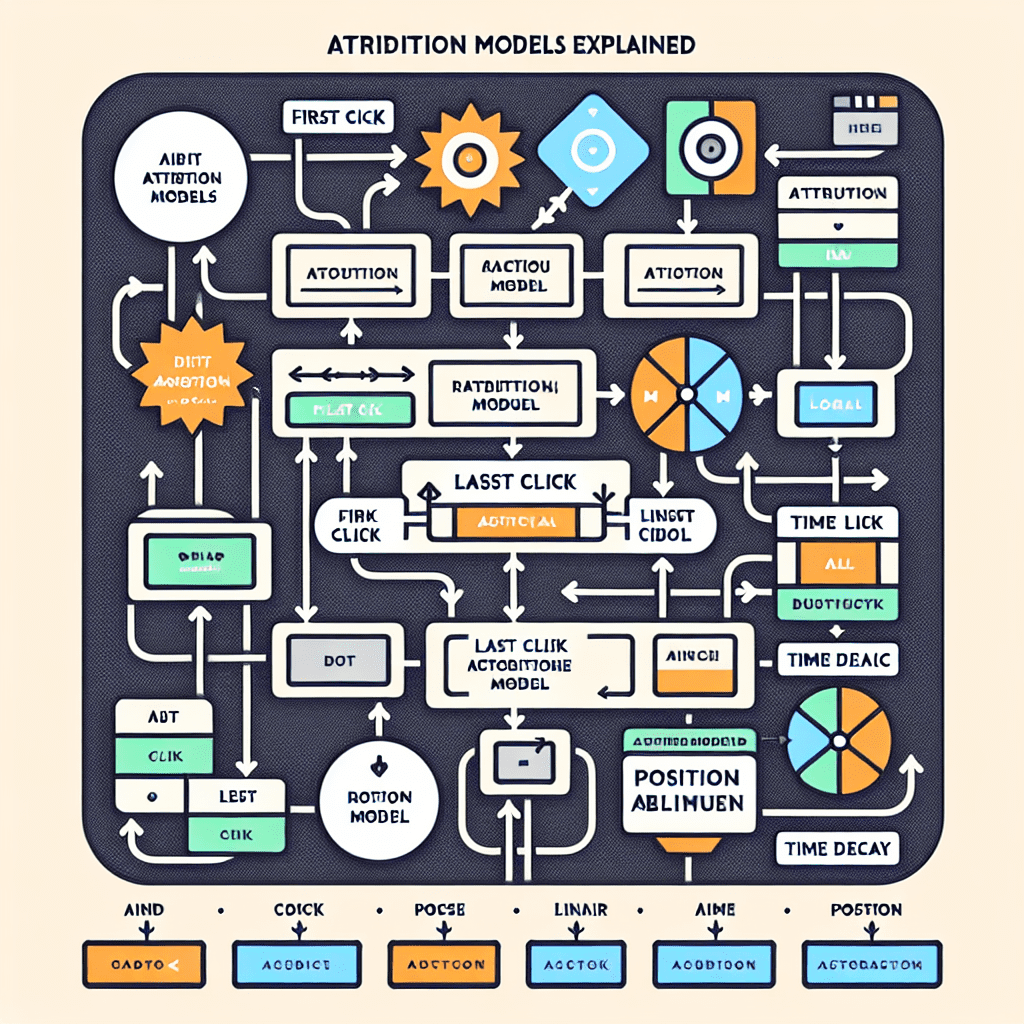-
Table of Contents
- Attribution Models Explained: Which One Should You Use?
- Let’s Get One Thing Straight: Attribution Isn’t Optional
- The Usual Suspects: Common Attribution Models (and Why They’re Flawed)
- 1. First-Touch Attribution
- 2. Last-Touch Attribution
- 3. Linear Attribution
- 4. Time-Decay Attribution
- 5. U-Shaped (Position-Based) Attribution
- 6. W-Shaped Attribution
- 7. Algorithmic (Data-Driven) Attribution
- Truth Bomb:
- So, Which Attribution Model Should You Use?
- If You’re a High-Growth B2B SaaS Company:
- If You’re a DTC Brand with Short Sales Cycles:
- If You’re Running Multi-Channel Campaigns:
- Framework: The MAGNET™ Approach to Attribution
- Case Study: How Attribution Saved a $5M Budget
Attribution Models Explained: Which One Should You Use?

Attribution models aren’t just a data science parlor trick—they’re the difference between scaling smart and scaling blind. In this no-BS guide, we break down the real strategic value of attribution models, why most marketers are using them wrong, and how to choose the one that actually aligns with your business goals.
Let’s Get One Thing Straight: Attribution Isn’t Optional
If you’re still treating attribution like a “nice-to-have,” you’re not running a marketing department—you’re running a casino. And unless your CMO title comes with a blackjack table, it’s time to get serious about how you assign credit to your marketing efforts.
Attribution models are the frameworks that determine which touchpoints in your customer journey get credit for a conversion. Sounds simple, right? It’s not. Because the way you assign credit directly impacts your budget, your strategy, and ultimately, your growth trajectory.
And yet, most companies are still using the wrong model—or worse, no model at all. That’s like trying to fly a plane with a blindfold on and calling it “agile.”
The Usual Suspects: Common Attribution Models (and Why They’re Flawed)
Let’s break down the most common attribution models and why they’re often misused or misunderstood.
1. First-Touch Attribution
This model gives 100% of the credit to the first interaction a customer has with your brand.
- Pros: Great for understanding what’s driving awareness.
- Cons: Ignores everything that happens after the first click. It’s like giving the Oscar to the casting director and ignoring the actors, director, and editor.
2. Last-Touch Attribution
This model gives all the credit to the final interaction before conversion.
- Pros: Simple to implement. Tells you what closed the deal.
- Cons: Ignores the entire journey. It’s like marrying someone after one great date and forgetting the six months of therapy that got you there.
3. Linear Attribution
Distributes credit equally across all touchpoints.
- Pros: Recognizes the full journey.
- Cons: Assumes all touchpoints are equally valuable. Spoiler: they’re not.
4. Time-Decay Attribution
Gives more credit to touchpoints closer to the conversion.
- Pros: Acknowledges recency bias in decision-making.
- Cons: Still doesn’t account for the true influence of each touchpoint.
5. U-Shaped (Position-Based) Attribution
Gives 40% credit to the first and last touchpoints, and distributes the remaining 20% across the middle.
- Pros: Balances awareness and conversion.
- Cons: Arbitrary weighting. Who decided 40% was the magic number?
6. W-Shaped Attribution
Gives credit to the first touch, lead conversion, and opportunity creation.
- Pros: Better for B2B funnels with long sales cycles.
- Cons: Still doesn’t capture the full nuance of multi-channel influence.
7. Algorithmic (Data-Driven) Attribution
Uses machine learning to assign credit based on actual impact.
- Pros: Most accurate. Reflects real-world behavior.
- Cons: Requires serious data infrastructure. Not for the faint of heart—or budget.
Truth Bomb:
If you’re using the wrong attribution model, you’re not just misallocating budget—you’re actively sabotaging your growth strategy.
So, Which Attribution Model Should You Use?
Here’s the part where most articles say, “It depends.” But we’re not most articles. Let’s get specific.
If You’re a High-Growth B2B SaaS Company:
- Start with W-Shaped Attribution to align with your funnel stages.
- Layer in algorithmic modeling as your data matures.
If You’re a DTC Brand with Short Sales Cycles:
- Use Time-Decay or Data-Driven Attribution to capture recency and influence.
- Test against Last-Touch to understand closing power.
If You’re Running Multi-Channel Campaigns:
- Linear is a decent starting point, but don’t stop there.
- Use custom models in Google Analytics 4 or Adobe Analytics to reflect your actual funnel.
Framework: The MAGNET™ Approach to Attribution
At MarkCMO, we use the MAGNET™ Framework to align attribution with business outcomes:
- Map the customer journey
- Assess channel influence
- Grade touchpoint value
- Normalize data across platforms
- Evaluate model performance quarterly
- Tweak based on ROI, not gut feel
This isn’t theory—it’s how we’ve helped brands scale from $10M to $100M+ in ARR.
Case Study: How Attribution Saved a $5M Budget
A client came to us with a $5M annual marketing budget and no attribution model. They were over-investing in paid search and under-investing in content and email. Why? Because last-touch attribution told them Google Ads was the hero.
We implemented a W-Shaped model and discovered that email nurtures

